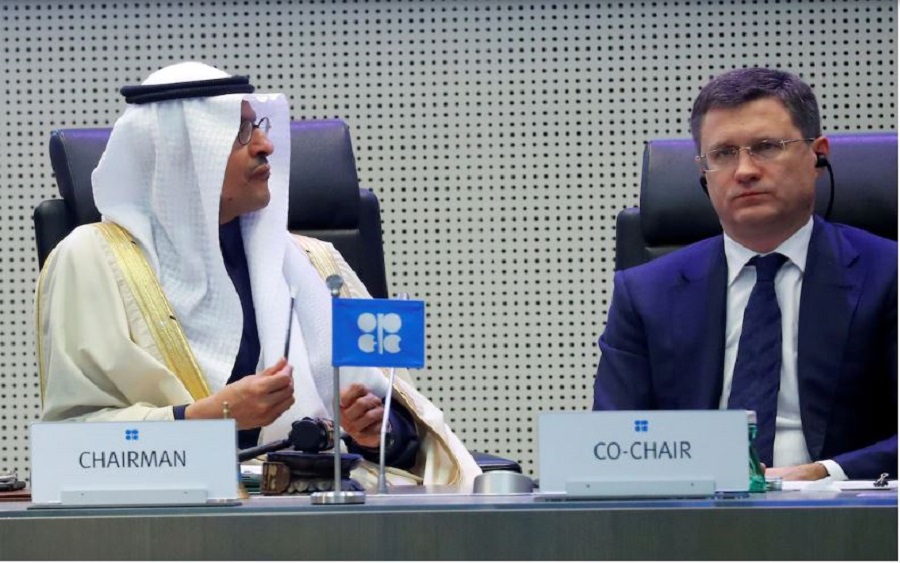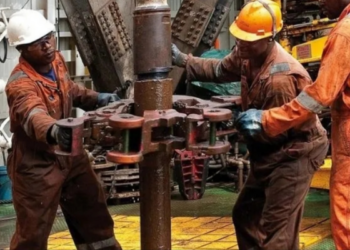The stage is set for OPEC+ to virtually meet on the 4th of June to discuss the extension of output cuts. The previous agreement on curbs resulted in a historic reduction of 9.7m barrels per day. Compliance has been commendable even to the point where some nations started shutting production before the effective date. The meeting in April was an emergency meeting after the diplomatic intervention by Donald Trump, who needed to save the energy industry in the United States.
This week’s meeting does not have any dramatic buildup to it (although the date has been brought forward to factor certain fundamentals). Still, there is a consensus or belief that the meeting will be successful, which is why prices have soared in the last couple of days. On Tuesday, Oil prices closed in on three-month highs because of the positive anticipation that OPEC+ producers would conclude in the extension of the production cuts at the forthcoming meeting. Brent Oil broke the $39 range, which has not been feasible since March.
READ ALSO: Subsidy and PIB
But energy analysts and traders familiar with the history of OPEC meetings know very well that surprises and disagreements can spring up during the sessions and can negatively affect prices. To recall the last two meetings, the first meeting in March that led to the crash of prices from $50 to $32 after the discord between Russia and Saudi Arabia were Russia did not believe cuts were necessary to salvage the demand destruction caused by the coronavirus. The second meeting, which is the more recent, featured a Mexican standoff were Mexico would defiantly not accept their part in the global cuts. It took efforts by Trump (again) to agree to shoulder some of the cuts imposed on Mexico.
Skeptics believe Russia might be this week’s party pooper. Russia has always been the black sheep in the OPEC+ family as they tend to ever deviate from consensual commitment concerning the oil market. On Wednesday, Oil was observed to retreat by more than 4%, after reports suggested that Russia was mulling over easing production cuts as planned in July. Russian Minister, Novak expressed how the country expects global supply and demand to balance in June and July. This optimism is shared amongst Russian industry players who have felt the pains of output cuts, especially producers who must maneuver shutting down many wells without causing damage to the oil fields. To be fair, Russia is responsible for about a quarter of the total OPEC+ cuts and prices at these levels still negatively impacts the Russian budget.
READ MORE: Global oil market to re-balance in 2 months’ time
Although scaling back curbs is line with the OPEC+ deal and demand picking up globally as expressed by the Russian Energy Minister is true, it would be a classic tale of Russian Roulette if countries ease back on production cuts. The market demand must fully recover. There is still a shortage demand for consumption for jet fuel as airlines are not operating at normal levels, with experts saying it would take years before the airline industry recovers. History suggests we should be cautious with Russia. Moscow is solely interested in increasing market share and winning its veiled rivalry with U.S shale oil. In the short-term, Russia’s defiance in February is why we are at these levels.

It is no surprise that Saudi Arabia Crown Prince Mohammed Bin Salman and United States President Donald Trump individually have had calls with Russia’s President on the need for coordination and cooperation in the oil markets days before the OPEC+ meeting. It seems that these discussions have been positive, and prices have reacted in this manner. Head of Oil market analysis at Rystad Energy, Bjornar Tonhaugen affirmed that “at this stage, there are two only variables that can significantly move prices, which are “Hints on the direction at this meeting and the outcome, and the rate of the shut production’s reactivation.”
READ ALSO: Ajaokuta’s completion to kick off as Russia provides funds
Oil Bear traders would be monitoring this meeting; any sign of disagreement would be treated with selling pressure. However, a successful meeting does not mean an immediate rise in price because the success has already been “priced in.” Hopefully, we have a successful meeting. Oil prices need back to back rallies to sustain its ascension to the top. Nigeria needs this, the OPEC cartel needs this, Shale oil companies need this, and the Kremlin budget needs this too.






















